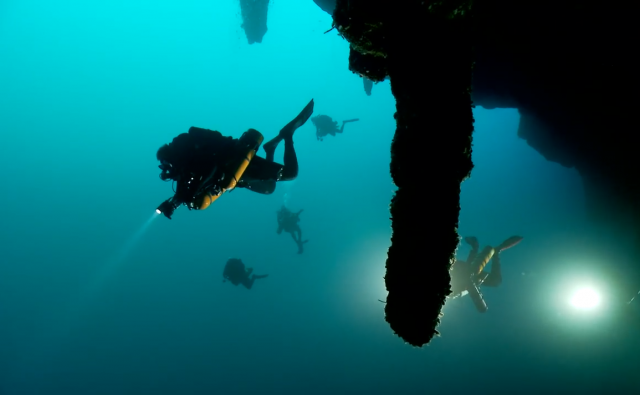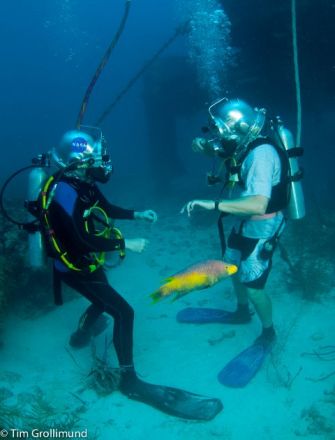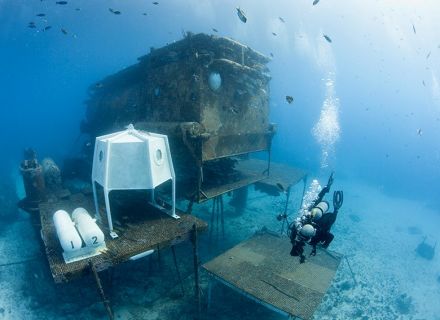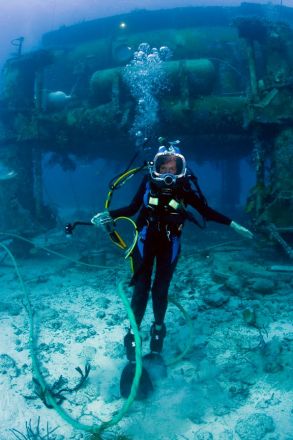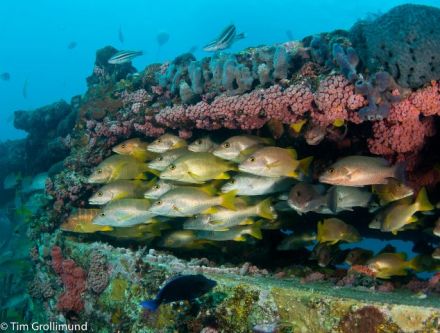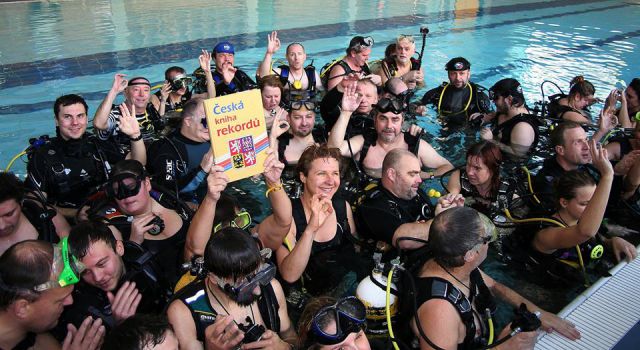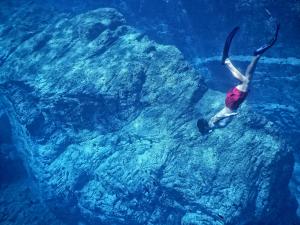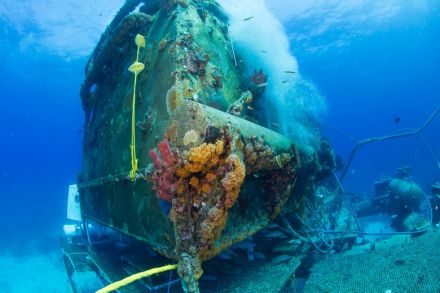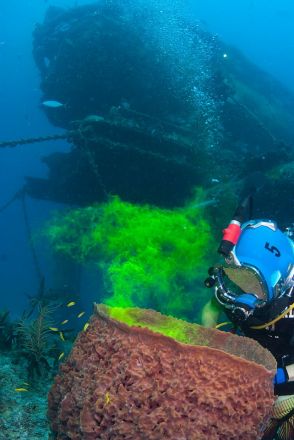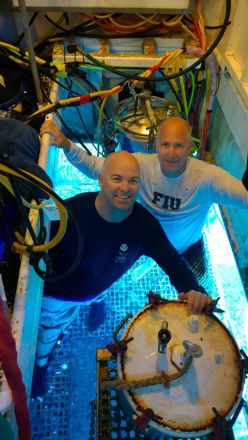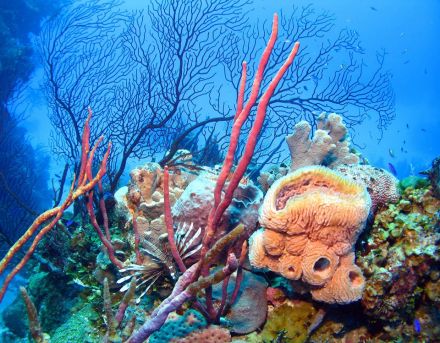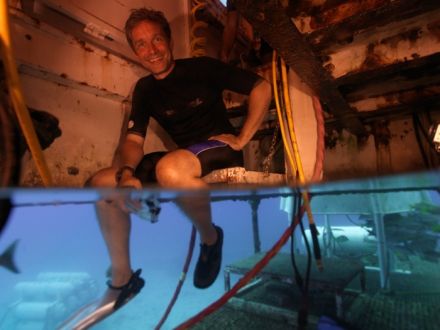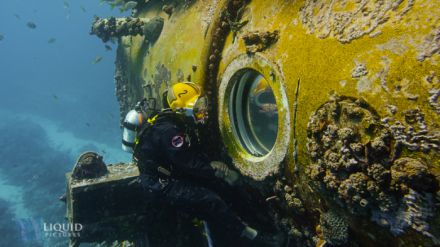Aquarius - A Living Reef
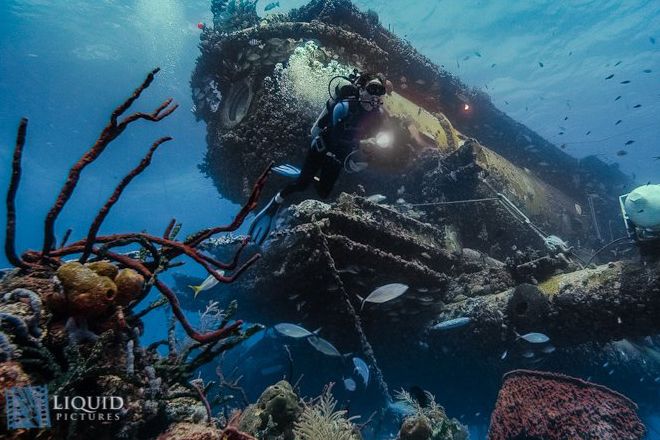
The Aquarius undersea habitat began its journey in 1993. Deployed on Conch Reef in the Florida Keys National Marine Sanctuary, at a depth of 63 feet and four miles offshore, the Aquarius has provided a shelter to scientists for over 20 years. The laboratory is attached to a baseplate that positions the underwater habitat (underwater laboratories are also called habitats) about 13 feet off the bottom. This means that the working depth of those inside the laboratory is about 50 feet deep. Located inside the 81–ton, 43 x 20 x 16.5–foot underwater laboratory are all the comforts of home: six bunks, a shower and toilet, instant hot water, a microwave, trash compactor, and a refrigerator even air conditioning and computers linked back to shore by wireless telemetry.
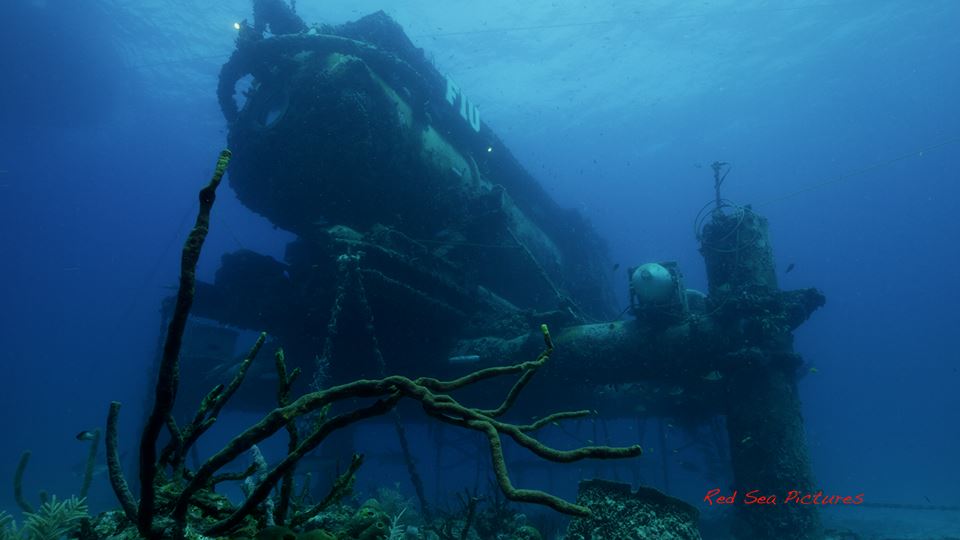
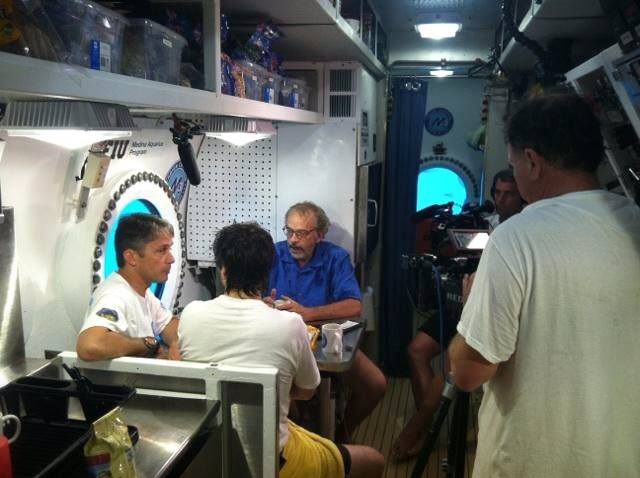
inside the lab
Interesting facts
- The Life Support Buoy (LSB) floats above Aquarius and provides mission critical power, air, and network connectivity
- Waves on the surface cause pressure changes inside Aquarius, the internal pressure in Aquarius is 2.4 times surface pressure
- During missions, which usually last 10 days, Aquanauts cannot return to the surface
- Aquarius is used to train Astronauts for space exploration.
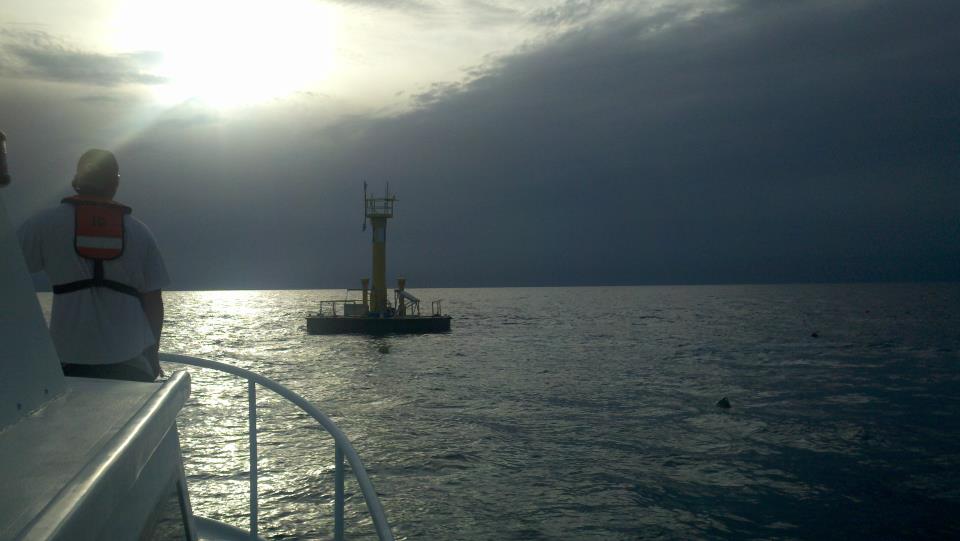
approaching the LSB - a surface support buoy
Saturation diving techniques allow aquanauts to remain underwater for extended periods while postponing decompression requirements until the end of a mission, with missions typically lasting 10-14 days. Each day the Aquanauts can spend 8-9 hours in the water working. This is something that could not be possible using surface oriented diving techniques. Living live on the bottom and concentrating on your research. For you to get a picture: Nine days of a research using Aquarius might take 9 months to a year when diving from a boat at the surface. That's a marked difference.
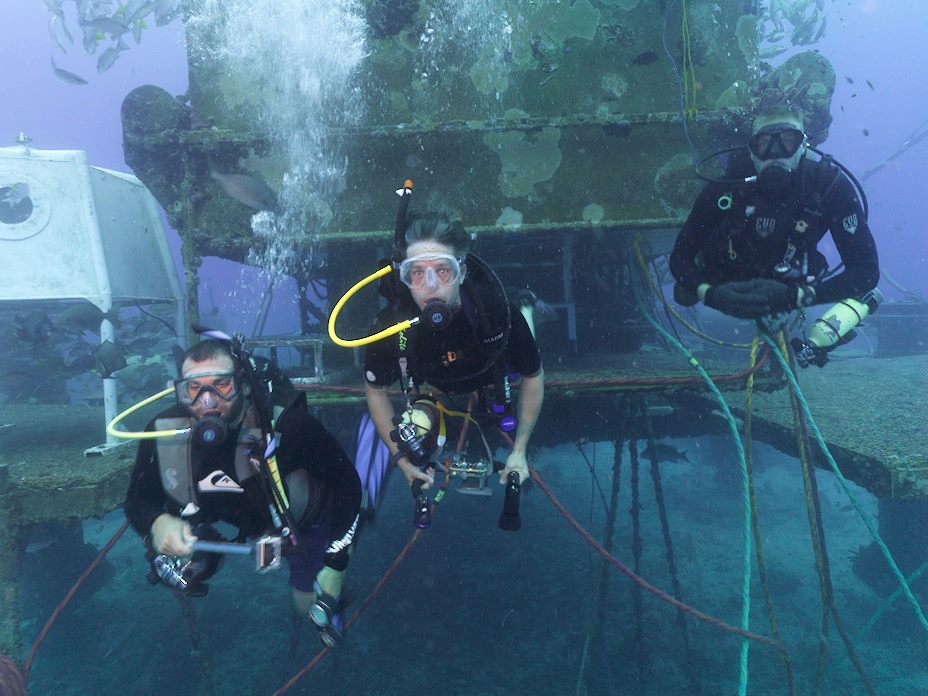
Advanced networking and video production capabilities allow Aquarius Reef Base to share the science and adventure with the world. The unique assets and capabilities of Aquarius Reef Base make it a leader in coral reef research. Aquarius Reef Base is also an exceptional training and test facility for NASA and the U.S. Navy, among others. And yet, it's future is uncertain. Although it costs a lot of money to run, the researches done with help of the habitat might be crucial for our planet in years to come, we should not allow to shut it down.
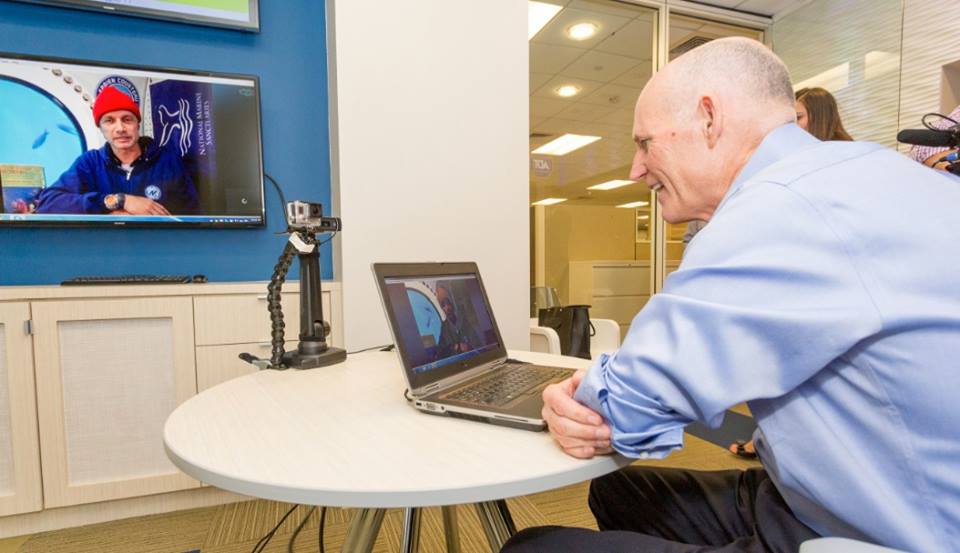
"Aquarius is unique asset, it is one of a kind saturation diving unit that is dedicated to sience education and outreach, it's a complete immersive experience that you can't find nowhere else on the planet," says Thomas Potts, Aquarius Reef Base Director
To prevent Aquarius from shutting down, you can support it through the Aquarius Foundation on its website.
All images are courtesy of Aquarius Reef Base if not stated otherwise; Copyrights applied.
Photo gallery
Source: http://www.aquariusreefbase.org






